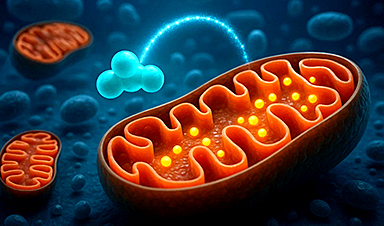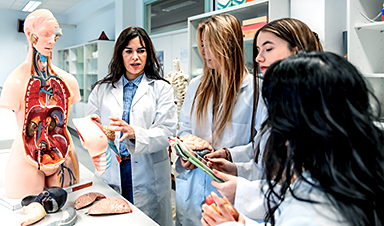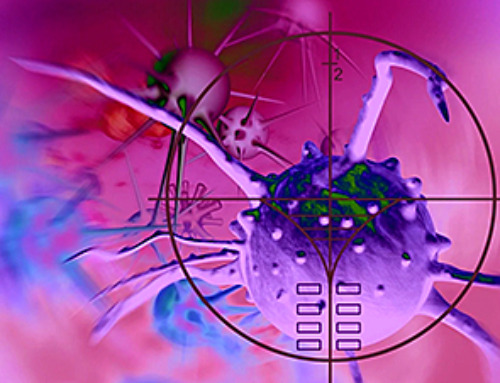After more than five decades of mystery, scientists have finally unveiled the detailed structure and function of a long-theorized molecular machine in our mitochondria — the mitochondrial pyruvate carrier.
This microscopic gatekeeper controls how cells fuel themselves by transporting pyruvate, a key energy source, across mitochondrial membranes. Now visualized using cryo-electron microscopy, the carrier’s lock-like mechanism could be the key to tackling diseases like cancer, diabetes, and even hair loss. By blocking or modifying this gateway, researchers believe we could reroute how cells generate energy and develop powerful, targeted treatments.
Unlocking a Mitochondrial Mystery
After more than 50 years, scientists have finally uncovered how a tiny molecular machine inside our cells helps turn sugar into energy, a process essential for life.
Researchers at the Medical Research Council (MRC) Mitochondrial Biology Unit at the University of Cambridge have revealed the structure of this machine, which works like a canal lock to move a molecule called pyruvate into the mitochondria — the parts of our cells often called the “powerhouses.” Pyruvate is produced when our bodies break down sugars, and it plays a key role in energy production.
Visualizing the Invisible
This machine, known as the mitochondrial pyruvate carrier, was first proposed in 1971. But only now have scientists been able to visualize it at the atomic level, using a powerful imaging technique called cryo-electron microscopy, which magnifies structures up to 165,000 times their size. The findings appear today (April 18) in Science Advances.
Dr. Sotiria Tavoulari, Senior Research Associate at the University of Cambridge, who helped identify the components of the carrier, explained: “Sugars in our diet provide energy for our bodies to function. When they are broken down inside our cells they produce pyruvate, but to get the most out of this molecule, it needs to be transferred inside the cell’s powerhouses, the mitochondria. There, it helps increase 15-fold the energy produced in the form of the cellular fuel ATP.”
Revealing the Transport Mechanism
Maximilian Sichrovsky, a PhD student at Hughes Hall and joint first author of the study, said: “Getting pyruvate into our mitochondria sounds straightforward, but until now we haven’t been able to understand the mechanism of how this process occurs. Using state-of-the-art cryo-electron microscopy, we’ve been able to show not only what this transporter looks like, but exactly how it works. It’s an extremely important process, and understanding it could lead to new treatments for a range of different conditions.”
Molecular Locks and Canal Gates
Mitochondria are surrounded by two membranes. The outer one is porous, and pyruvate can easily pass through, but the inner membrane is impermeable to pyruvate. To transport pyruvate into the mitochondrion, first an outer ‘gate’ of the carrier opens, allowing pyruvate to enter the carrier. This gate then closes, and the inner gate opens, allowing the molecule to pass through into the mitochondrion.
“It works like the locks on a canal but on the molecular scale,” said Professor Edmund Kunji from the MRC Mitochondrial Biology Unit, and a Fellow at Trinity Hall, Cambridge. “There, a gate opens at one end, allowing the boat to enter. It then closes, and the gate at the opposite end opens to allow the boat smooth transit through.”
A New Drug Target Emerges
Because of its central role in controlling the way mitochondria operate to produce energy, this carrier is now recognised as a promising drug target for a range of conditions, including diabetes, fatty liver disease, Parkinson’s disease, specific cancers, and even hair loss.
Pyruvate is not the only energy source available to us. Our cells can also take their energy from fats stored in the body or from amino acids in proteins. Blocking the pyruvate carrier would force the body to look elsewhere for its fuel – creating opportunities to treat a number of diseases. In fatty liver disease, for example, blocking access to pyruvate entry into mitochondria could encourage the body to use potentially dangerous fat that has been stored in liver cells.
Starving Cancer and Stimulating Hair Growth
Likewise, there are certain tumour cells that rely on pyruvate metabolism, such as in some types of prostate cancer. These cancers tend to be very ‘hungry’, producing excess pyruvate transport carriers to ensure they can feed more. Blocking the carrier could then starve these cancer cells of the energy they need to survive, killing them.
Previous studies have also suggested that inhibiting the mitochondrial pyruvate carrier may reverse hair loss. Activation of human follicle cells, which are responsible for hair growth, relies on metabolism and, in particular, the generation of lactate. When the mitochondrial pyruvate carrier is blocked from entering the mitochondria in these cells, it is instead converted to lactate.
Drug Design Gets a Molecular Blueprint
Professor Kunji said: “Drugs inhibiting the function of the carrier can remodel how mitochondria work, which can be beneficial in certain conditions. Electron microscopy allows us to visualize exactly how these drugs bind inside the carrier to jam it – a spanner in the works, you could say. This creates new opportunities for structure-based drug design in order to develop better, more targeted drugs. This will be a real game changer.”
Reference: “Molecular basis of pyruvate transport and inhibition of the human mitochondrial pyruvate carrier” by Sichrovsky, M, Lacabanne, D, Ruprecht, JJ & Rana, JJ et al., 18 April 2025, Science Advances.
DOI: 10.1126/sciadv.adw1489
The research was supported by the Medical Research Council and was a collaboration with the groups of Professors Vanessa Leone at the Medical College of Wisconsin, Lucy Forrest at the National Institutes of Health, and Jan Steyaert at the Free University of Brussels.
News
Repurposed drugs could calm the immune system’s response to nanomedicine
An international study led by researchers at the University of Colorado Anschutz Medical Campus has identified a promising strategy to enhance the safety of nanomedicines, advanced therapies often used in cancer and vaccine treatments, [...]
Nano-Enhanced Hydrogel Strategies for Cartilage Repair
A recent article in Engineering describes the development of a protein-based nanocomposite hydrogel designed to deliver two therapeutic agents—dexamethasone (Dex) and kartogenin (KGN)—to support cartilage repair. The hydrogel is engineered to modulate immune responses and promote [...]
New Cancer Drug Blocks Tumors Without Debilitating Side Effects
A new drug targets RAS-PI3Kα pathways without harmful side effects. It was developed using high-performance computing and AI. A new cancer drug candidate, developed through a collaboration between Lawrence Livermore National Laboratory (LLNL), BridgeBio Oncology [...]
Scientists Are Pretty Close to Replicating the First Thing That Ever Lived
For 400 million years, a leading hypothesis claims, Earth was an “RNA World,” meaning that life must’ve first replicated from RNA before the arrival of proteins and DNA. Unfortunately, scientists have failed to find [...]
Why ‘Peniaphobia’ Is Exploding Among Young People (And Why We Should Be Concerned)
An insidious illness is taking hold among a growing proportion of young people. Little known to the general public, peniaphobia—the fear of becoming poor—is gaining ground among teens and young adults. Discover the causes [...]
Team finds flawed data in recent study relevant to coronavirus antiviral development
The COVID pandemic illustrated how urgently we need antiviral medications capable of treating coronavirus infections. To aid this effort, researchers quickly homed in on part of SARS-CoV-2's molecular structure known as the NiRAN domain—an [...]
Drug-Coated Neural Implants Reduce Immune Rejection
Summary: A new study shows that coating neural prosthetic implants with the anti-inflammatory drug dexamethasone helps reduce the body’s immune response and scar tissue formation. This strategy enhances the long-term performance and stability of electrodes [...]
Scientists discover cancer-fighting bacteria that ‘soak up’ forever chemicals in the body
A family of healthy bacteria may help 'soak up' toxic forever chemicals in the body, warding off their cancerous effects. Forever chemicals, also known as PFAS (per- and polyfluoroalkyl substances), are toxic chemicals that [...]
Johns Hopkins Researchers Uncover a New Way To Kill Cancer Cells
A new study reveals that blocking ribosomal RNA production rewires cancer cell behavior and could help treat genetically unstable tumors. Researchers at the Johns Hopkins Kimmel Cancer Center and the Department of Radiation Oncology and Molecular [...]
AI matches doctors in mapping lung tumors for radiation therapy
In radiation therapy, precision can save lives. Oncologists must carefully map the size and location of a tumor before delivering high-dose radiation to destroy cancer cells while sparing healthy tissue. But this process, called [...]
Scientists Finally “See” Key Protein That Controls Inflammation
Researchers used advanced microscopy to uncover important protein structures. For the first time, two important protein structures in the human body are being visualized, thanks in part to cutting-edge technology at the University of [...]
AI tool detects 9 types of dementia from a single brain scan
Mayo Clinic researchers have developed a new artificial intelligence (AI) tool that helps clinicians identify brain activity patterns linked to nine types of dementia, including Alzheimer's disease, using a single, widely available scan—a transformative [...]
Is plastic packaging putting more than just food on your plate?
New research reveals that common food packaging and utensils can shed microscopic plastics into our food, prompting urgent calls for stricter testing and updated regulations to protect public health. Beyond microplastics: The analysis intentionally [...]
Aging Spreads Through the Bloodstream
Summary: New research reveals that aging isn’t just a local cellular process—it can spread throughout the body via the bloodstream. A redox-sensitive protein called ReHMGB1, secreted by senescent cells, was found to trigger aging features [...]
AI and nanomedicine find rare biomarkers for prostrate cancer and atherosclerosis
Imagine a stadium packed with 75,000 fans, all wearing green and white jerseys—except one person in a solid green shirt. Finding that person would be tough. That's how hard it is for scientists to [...]
Are Pesticides Breeding the Next Pandemic? Experts Warn of Fungal Superbugs
Fungicides used in agriculture have been linked to an increase in resistance to antifungal drugs in both humans and animals. Fungal infections are on the rise, and two UC Davis infectious disease experts, Dr. George Thompson [...]





















